How Many Types Of Dragons Are There And What Can They Do?
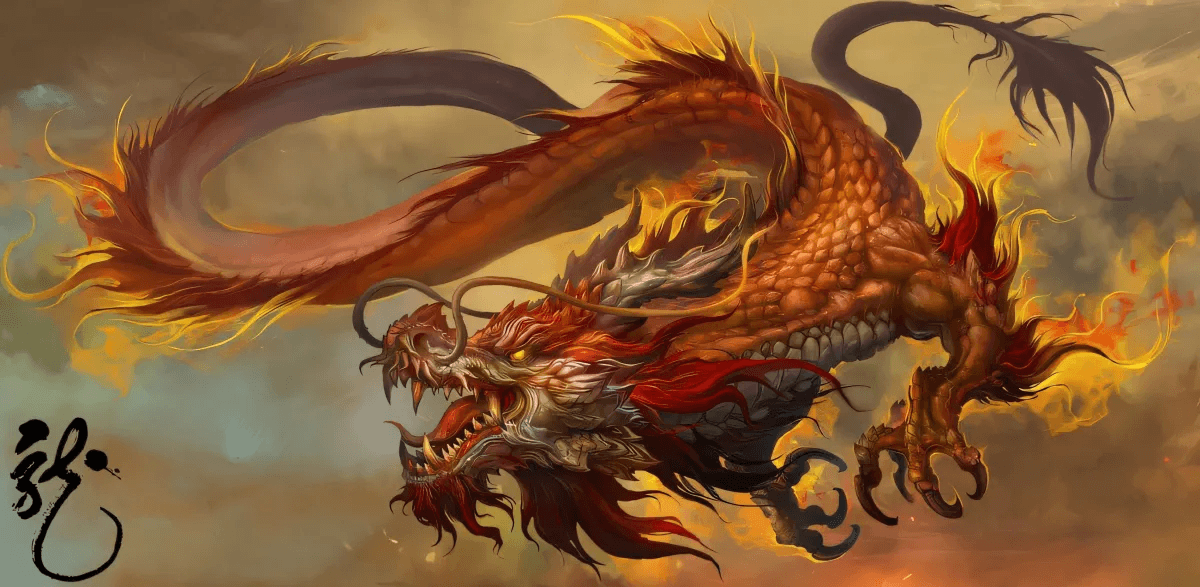
There is no simple answer to the question ‘how many types of dragons are there?’ Dragons are deeply embedded in many different cultures and the mythology and folklore surrounding them are so vast that it’s practically impossible to determine how many there are. Some sources claim there are 73 types, others that there are only 50.
Here is a list of 10 types of dragons and what they can do.
1. The Chinese Dragon
Also known as the Oriental or Eastern Dragon, Chinese Dragons are featured heavily in Chinese culture as symbols of power and good luck. They have an affinity with water, able to summon rain to end droughts and control other water phenomena; therefore, it shouldn’t be much of a surprise that Chinese Dragons live at the bottom of seas and other bodies of water like rivers and lakes.
They are usually more serpentine than Western Dragons which are more lizard/dinosaur-like, with elongated bodies and claws like a hawk. One of the most popular legends about the Chinese dragon's origin is the Totem-Worship Theory that states that dragons came to be because the Yellow Emperor Huangdi went to war with nine other tribes.
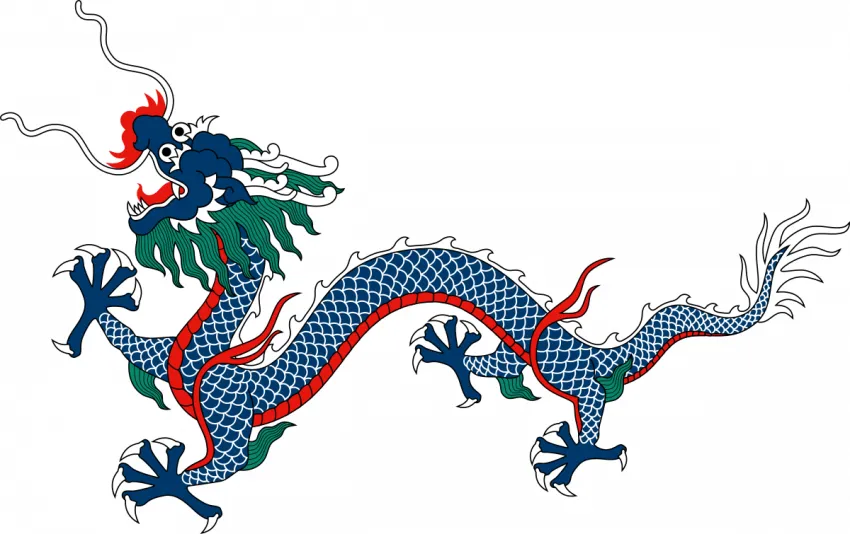
After defeating each tribe he would add the other tribes’ totems into his own dragon totem, so the dragon became a hybrid of many other animals with eyes like a shrimp, antlers like a deer, a big mouth like a bull, a nose like a dog, whiskers like a catfish, a lion's mane, a long tail like a snake, scales like a fish, and claws like a hawk.
The Chinese Dragon can actually be divided further into nine more sub-categories, all with different attributes and skills, such as the Bixi (bee-sshee). It is the eldest and is turtle-shaped with sharp teeth, fond of carrying heavy objects, and is often featured on graves/monuments.
2. The Standard Western Dragon
The Western Dragon is probably the image that first comes to mind when you think of dragons and is abound in modern media. They are four-legged, with large wings, a long tail, and a tendency to breathe fire. The Western Dragon is an over-arching term for European dragons to be grouped under.
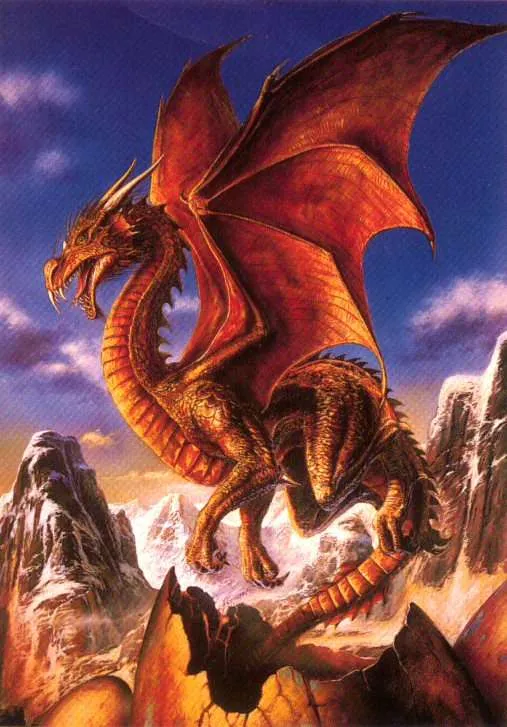
In illustrations from the Middle Ages, Dragons were depicted as being like large lizards with wings that were far too small to sustain flight; however, the dragon’s anatomy became influenced after the first reconstructions of dinosaurs were created.
After people realised that dinosaurs were more akin to birds and mammals than lizards, dragon imagery changed, they began being portrayed standing upright, with large wings.
While Eastern dragons act as guardians and symbolise prosperity and power, Western dragons symbolise destruction, death, and were often associated with the Devil.
3. The Wyvern
An English Dragon is distinct from the Standard Western Dragon due to the fact that it is bipedal; in other words, it only has two legs instead of four. They are typically smaller than other dragons and sometimes have venomous stingers or darts at the ends of their tails. They are rarely known to breathe fire and supposedly have excellent eyesight.
For some, the Wyvern represents protection, strength, and valour, but can also be a sign of vengeance. One famous Wyvern is the Dragon of Mordiford, the local legend states that a young girl, Maud, desperately wanted a pet and found a baby Wyvern in the forest and took it home, not realising what she had found.
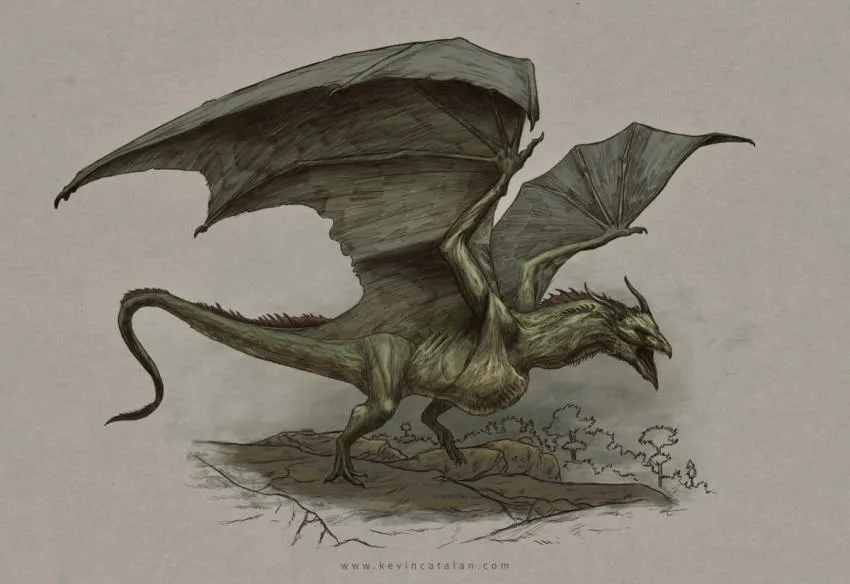
When her mother saw it she demanded that Maud take it back where it came from. While Maud pretended to do so, she actually hid it in the forest and raised it, playing with it and feeding it milk. Soon, though, the Wyvern became an adult and milk was no longer enough to satiate it, so it started killing farm animals.
As you can imagine the farmers and townspeople were not willing to put up with this and some of the farmers set off to kill the beast. However, the Wyvern killed and ate them developing the taste for human flesh and soon the dragon killed everything in its way, except for Maud who is considered a friend.
Eventually, a nobleman came to help the townspeople and confronted the Wyvern in a full set of armour, managing to stab it through the neck. With the Wyvern dead Maud went insane with grief and anger, not the happiest story but it remains a part of Mordiford’s culture to this day.
4. The Hydra
The most notorious trait of the Hydra is the fact that when one head is cut off at least one more grows in its place. Sometimes each Hydra head has a different ability such as spitting venom or breathing fire, and generally a Hydra’s blood and fangs are very poisonous too. All of this makes them extremely difficult to kill.
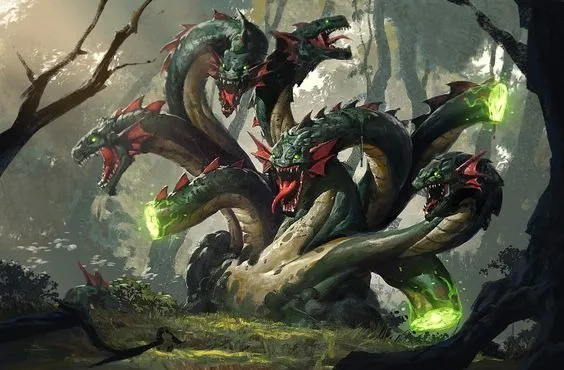
According to Greek mythology, the Lernaean Hydra was the offspring of Typhon and Echidna, it was a serpentine water dragon with a lair in the lake of Lerna in the Argolid. The exact number of heads a Hydra has varies depending on the source, but in Greek mythology the Hydra is stated to have more heads than vase-painters could paint, and one of them is immortal.
The Lernaean Hydra is defeated by Heracles as one of his twelve labours. Upon discovering that two heads grow back when he chops one-off, Heracles calls his nephew Iolaus to help him. Iolaus proceeds to cauterise the Hydra’s wounds after Heracles cuts off the dragon’s heads, burning the fresh stumps before they can regenerate. Finally, Heracles cuts off the Hydra’s immortal head and buries it under a rock.
5. The Japanese Dragon
Japanese dragons are amalgamations of dragons from Chinese, Indian, and Korean mythology combined with local folklore. Like many East Asian dragons, Japanese dragons are nearly always water gods associated with rainfall, storms, oceans, and bodies of water. These dragons will usually be depicted as wingless, serpentine creatures, who have clawed feet (if they have them at all).
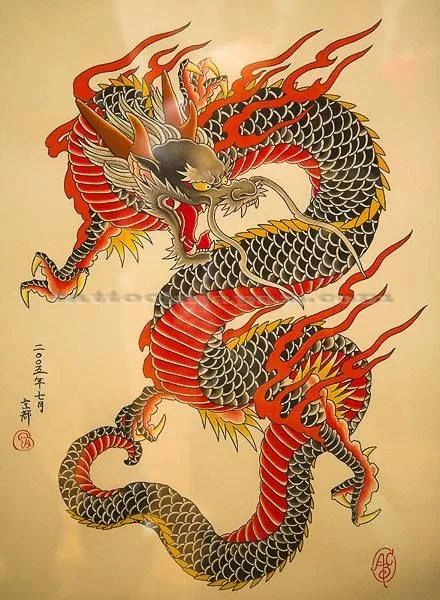
They can also have the ability to assume a human form, either a man or a woman. Japanese people tend to distinguish Japanese and East Asian dragons from Western dragons by the language used to refer to them, using ‘doragon’ when talking about Western dragons as opposed to other nouns such as ‘ryū’ or ‘tatsu’ for Asian dragons.
There are many Japanese dragons, one famous one is Ryūjin a sea god and master of serpents who lives in a palace under the sea. While he is generally seen as good, he features in various tales, sometimes aiding the protagonists, but occasionally becoming an obstacle as well.
6. The Druk
The Druk, also known as the thunder dragon, is from Tibetan and Bhutanese mythology and is a national symbol of Bhutan with Bhutanese leaders being called ‘Druk Gyalpo,’ which translates to ‘Thunder Dragon Kings.’ It appears on the flag with four jewels in its claws to represent wealth.
A Tibetan Buddhist branch called the Drukpa Kagyu embraced the Druk as its emblem after the sect’s founder perceived an omen as he built the Ralung Monastery.
As the monastery was being constructed, a thunderstorm raged on, and as thunder was thought to be the roar of a dragon the founder took this as a sign and renamed the monastery Drug Ralung with the disciples becoming known as Drugpa ‘those of the thunder.’
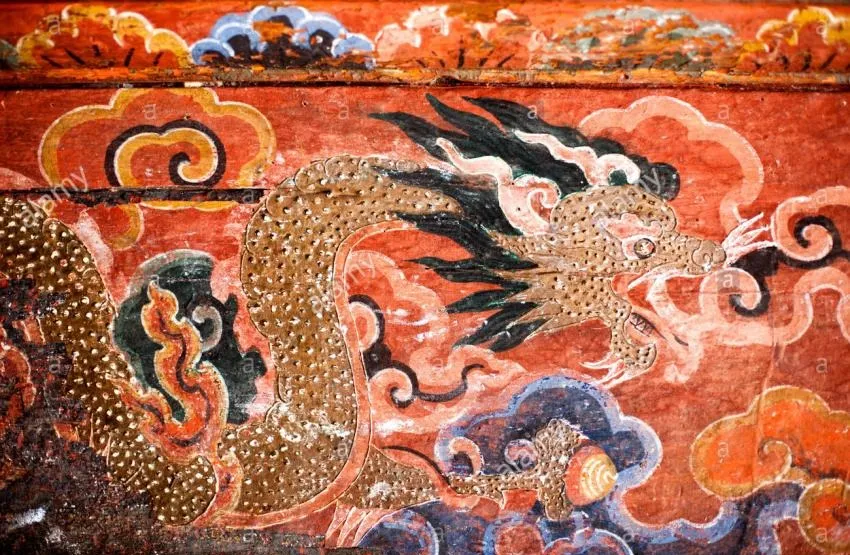
Tibetan dragons are long and thin in body, this is supposedly an adaptation to the high altitude they live in. They have four legs with five toes on each foot and are brightly coloured (often red and yellow) as they have no need for camouflage. They live on snowy mountains, moving further up the mountain as the snow melts, with the oldest dragons living at the summits of the Himalayas.
Tibetan dragons seem to be very virtuous; they are wise and are able to discern what is true and what is a lie. They are said to join monks in meditation but, although the dragons are more than capable of articulately communicating ideas and thoughts, they are forbidden from speaking with them−at least verbally.
Tibetan dragons are solitary beings and are invisible to humans; however, they will make their presence known with a thunderbolt, which will have the added benefit of making people who are going down the wrong path realise their mistakes and cause them to start living their lives virtuously.
7. The African Dragon
These dragons are not as commonly known as Western or Asian dragons and they are incredibly serpent-like in nature, most of the time being depicted without legs. Although they aren’t as well-known outside of Africa, they are still a significant part of the cultures, religions, and myths there.
There is an African creation myth that claims that a dragon helped create the world. Legend dictates that the world was made by the first primal god Nana-Buluku, but unable to do it alone Nana-Buluku made a companion-the rainbow serpent-dragon Aido-Hwedo. The twists of the dragon were used to create rivers and valleys, while its droppings created mountains and nourished the earth so that plants would grow.
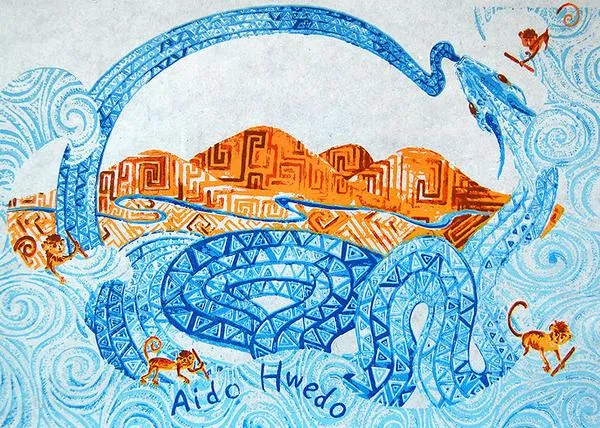
Once the earth was finished, though, it was so packed with plants and animals and mountains that Nana-Buluku was afraid it was too heavy and would collapse in on itself. To stop this happening Aido-Hwedo looped his body round the earth, biting his tail in his mouth (just like the ancient Egyptian serpent Ouroboros).
However, Aido-Hwedo couldn’t bear the heat, so Nana-Buluku created a great ocean in which he could live, providing him with red monkeys that would bring him food to eat. If the monkeys should ever fail to feed him, though, Aido-Hwedo will start eating his own tail, resulting in the destruction of the earth.
8. The Gaasyendietha
In early Iroqouis and Algonquin accounts people would talk of a race of giant serpentine dragons living in lake Ontario, with the Seneca convinced of the existence of the Gaasyendietha, a giant snake with a hydra head and the ability to fly and breathe fire. It was said to live mostly in lake Ontario but could travel to other bodies of water in Canada.
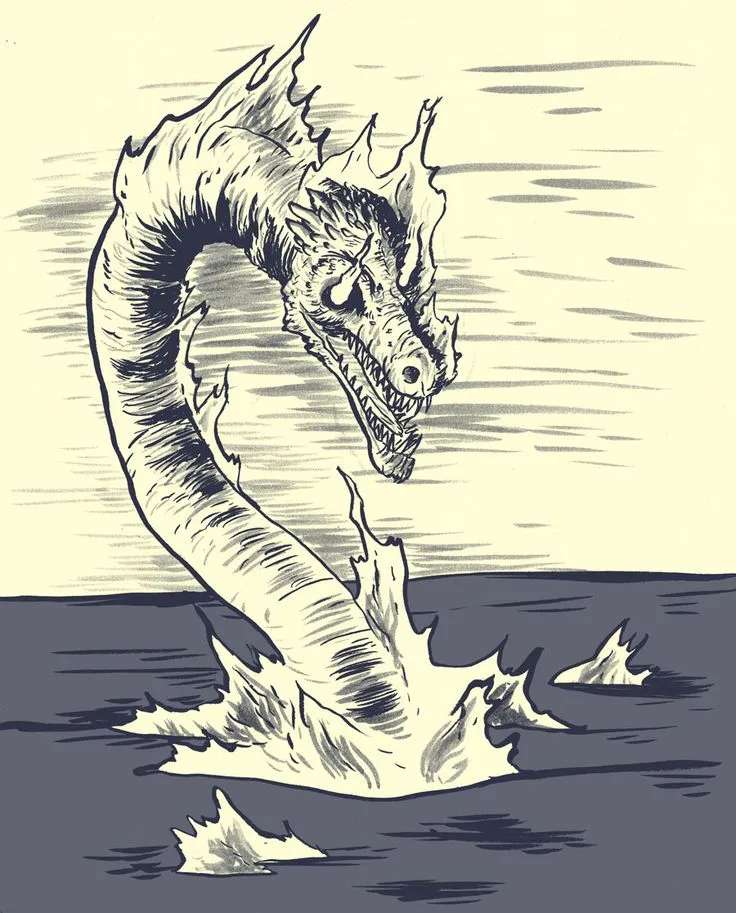
There are two oral traditional legends regarding the birth of the Gaasyendietha; the first theorised that it came from serpent eggs, while the other claimed that it came to earth in a meteor (technically making it an alien). As such, the Gaasyendietha is also known as the ‘meteor dragon,’ and is said to fly across the sky on a path made of fire.
9. The Quetzalcóatl
With a name meaning ‘feathered serpent,’ the Quetzalcóatl is a dragon whose physiology combines the characteristics of birds and rattlesnakes, and is one of the most revered gods of ancient Mesoamerica. He has connections to the gods of the rain, wind, and dawn, and was the giver of maize to the Aztecs, which was highly significant to a society that depended on a thriving agricultural sector to survive.
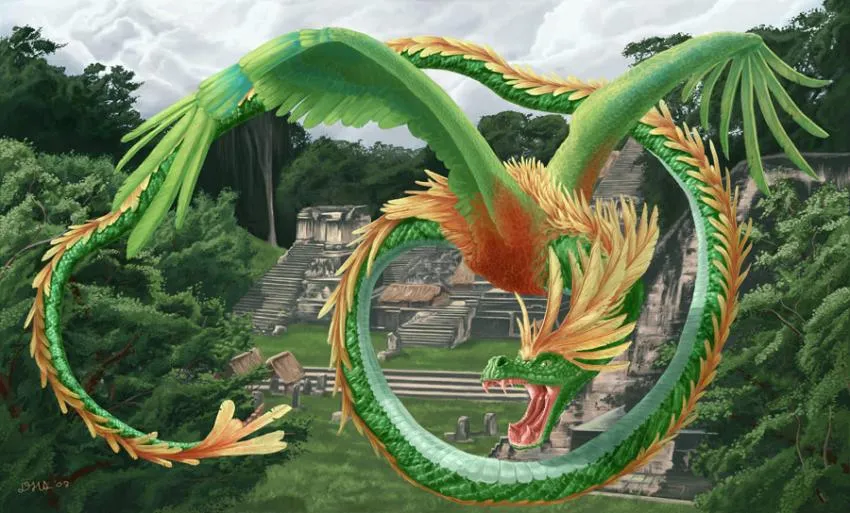
He also acted as a protector for craftsmen and was the patron god of knowledge, science, and the arts, with the Aztecs believing that he invented books and calendars. The Quetzalcóatl was even responsible for the organization of the original cosmos and contributed to the creation of humans. He was so well respected that Aztec High Priests would include his name in their titles to emphasise their rank.
10. The Vishap
A winged snake originating from Armenian Mythology, the Vishap is strongly associated with water and is comprised of the body parts of other animals. As they ascend to the skies or descend to earth they cause eclipses and/or thunderstorms to occur.
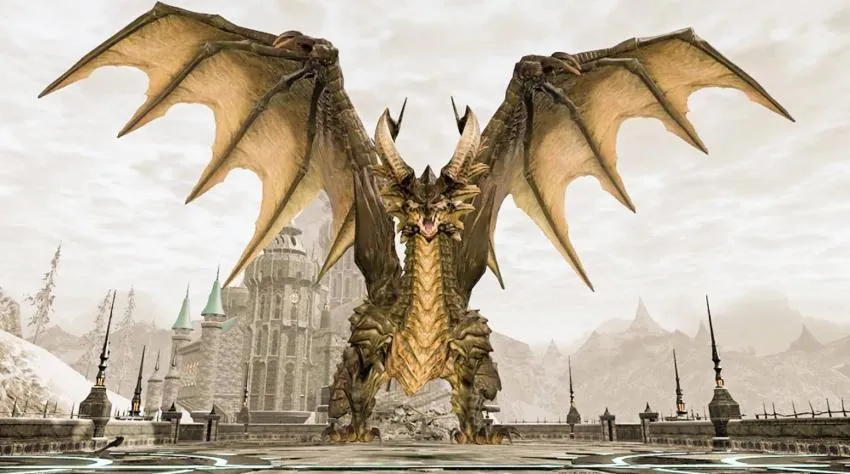
They represent water, fertility, wealth, and incredible power, but they have a vile steak as they are known to steal human children and replace them with their own offspring. There are also stories of Vishaps forcing people to sacrifice women to them, but these women would eventually be saved by heroes who slay the dragons.
According to legend, Vishaps live in the skies and clouds, high mountains, and big lakes, and Vishaps who reach over a thousand years old have the potential to swallow the world.
While western media would have you believe that all dragons are huge fire-breathing, reptilian monsters, just the sample of dragons included in this list shows that many mythological dragons actually have a higher affinity for water than fire and are more closely related to snakes than lizards or dinosaurs.
The image of the dragon has changed so much over the years that ancient dragons now seem foreign and alien. I think it would be great to see modern media portray more dragons that aren’t simply four-legged dinosaurs with wings and the ability to breathe fire, get some of the others out there!
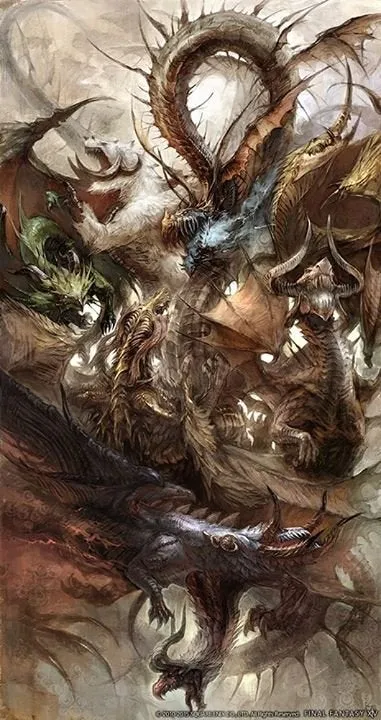
Opinions and Perspectives
The Vishap's thousand-year world-swallowing ability is an interesting take on apocalyptic scenarios.
The variety in dragon types really shows how creative human mythology can be.
Each of these dragons seems perfectly adapted to its cultural context. Makes you wonder about the origins of dragon myths.
The Quetzalcóatl giving maize to the Aztecs shows how dragon myths often tie into crucial cultural developments.
That bit about dragon imagery changing with dinosaur discoveries is a perfect example of how myths evolve.
Really appreciate how each culture's dragons reflect their values and natural environment.
I had no idea Heracles needed help to defeat the Hydra. Shows even heroes sometimes need assistance.
The Tibetan dragons sound more like spiritual beings than the fierce creatures we usually think of.
These descriptions really show how limiting the term dragon is for such diverse creatures.
Love how the Chinese dragon controls water to end droughts. Actually helpful to humanity!
The Wyvern of Mordiford tale feels like a medieval version of modern pet-gone-wrong stories.
The Vishap causing eclipses when they fly is such a creative explanation for natural phenomena.
Interesting that Japanese dragons can be either male or female in human form. Most stories only feature male dragons.
Those red monkeys feeding the African dragon to prevent world destruction is such a specific detail.
I think the Gaasyendietha being a meteor dragon is my favorite origin story of them all.
The way different cultures adapted dragon myths to their local environment is fascinating.
Modern stories really need to incorporate more of these unique dragon types instead of the same old formula.
Anyone else think it's interesting how many cultures associate dragons with wealth and prosperity?
The Druk story about the monastery construction and thunder is a great example of how dragon myths often start.
Found it interesting that the Hydra's heads could have different abilities. That's some serious power diversity.
The detail about Tibetan dragons being thin because of high altitude adaptation is surprisingly scientific.
Really surprised that African dragons aren't better known in popular culture. Their myths are amazing.
The idea of dragons joining monks in meditation but being forbidden to speak is such an interesting concept.
Honestly, I prefer the water-controlling dragons to the fire-breathing ones. Seems more mystical somehow.
The contrast between Western and Eastern dragon symbolism is striking. One represents destruction, the other prosperity.
Love how Japanese people use different words for Western vs Eastern dragons. Shows how distinct they view them.
The Quetzalcóatl being a patron of science and arts really challenges our modern monster-dragon stereotype.
I find it fascinating that dragons are often associated with wisdom across cultures, not just raw power.
The Vishap sounds absolutely terrifying. Imagine your child being replaced by a dragon offspring!
Actually, some sources say there are way more than 73 types if you count all regional variations.
The nine types of Chinese dragons deserve their own article. Would love to learn more about each sub-category.
That story about the Yellow Emperor combining totems explains why Chinese dragons look like multiple animals combined.
Never understood why Western culture made dragons evil when other cultures saw them as beneficial beings.
The detail about Tibetan dragons moving up mountains as snow melts is such a realistic touch to the mythology.
Interesting how the African dragon's droppings created mountains. Not the most glamorous origin story but quite unique!
The connection between dragons and natural phenomena like storms and eclipses is really clever.
I love that some of these dragons are actually protectors rather than destroyers. Changes the whole narrative.
The Wyvern's design makes more sense from a biological standpoint. Two legs and wings is more realistic than four legs plus wings.
Just realized how few of these dragons actually breathe fire. Most seem to control weather instead.
The Bixi being turtle-shaped is unexpected. I assumed all Chinese dragons were serpentine.
Learning about these different dragons really shows how limiting our modern fantasy stories can be.
I wonder what made water such a common element for dragons across so many cultures? There must be some deeper connection there.
The way dragons evolved from lizard-like to more bird-like in Western art is such a fascinating example of how science influences mythology.
I'm surprised there are only 50-73 types. With all these cultural variations, I would have expected more.
The Vishap stealing and replacing human children is terrifying! Definitely not the friendly dragon type.
You make a fair point about Western dragons, but I still think fire-breathing dragons are pretty cool.
The description of Chinese dragons living at the bottom of seas totally changes my perspective on dragon habitats.
It's incredible how the Quetzalcóatl was not just a dragon but also a god of knowledge and arts. Really challenges our modern dragon stereotypes.
The part about Tibetan dragons being invisible but communicating through thunderbolts is amazing. Such a unique concept.
I'm particularly intrigued by the Japanese dragons' ability to take human form. That adds such an interesting storytelling element.
The Hydra seems like the most terrifying of all to me. Imagine trying to fight something where cutting off heads only makes it stronger!
Completely agree. Modern media focuses too much on Western dragons. We need more diversity in dragon representation.
The African dragon creation myth is beautiful. I'd love to see more movies or books featuring Aido-Hwedo.
I have to disagree about wanting fewer fire-breathing dragons in media. Those classic Western dragons are iconic for a reason!
The Gaasyendietha being potentially alien in origin is wild! I love how some cultures connected dragons to cosmic events.
Does anyone else think it's interesting how Western dragons are usually seen as evil while Eastern ones are considered lucky? Really shows cultural differences.
That's so cool about the Druk being on Bhutan's flag! I love how dragons are still relevant in modern national identity.
The story of Maud and the Wyvern is actually quite sad. Reminds me of how dangerous it can be to try to tame wild creatures.
I always thought all dragons breathed fire, but apparently a lot of them are actually associated with water. Really opened my eyes to how diverse dragon mythology is.
Never knew that Western dragons' appearance changed because of dinosaur discoveries. Makes total sense though when you think about it.
I find it fascinating how different cultures have such varied interpretations of dragons. The Chinese dragon being a mix of different animal features is particularly interesting!
